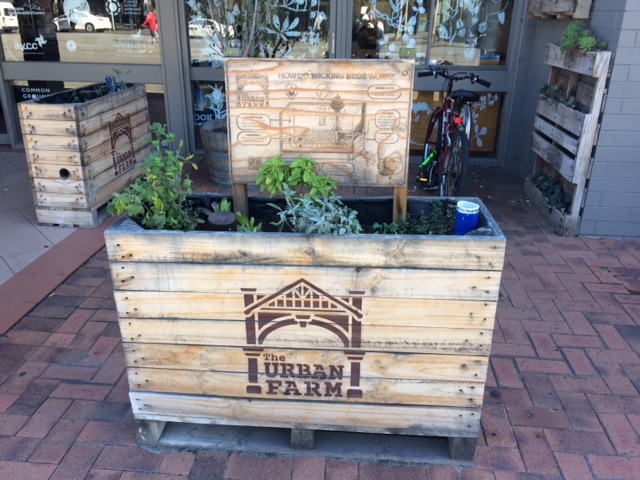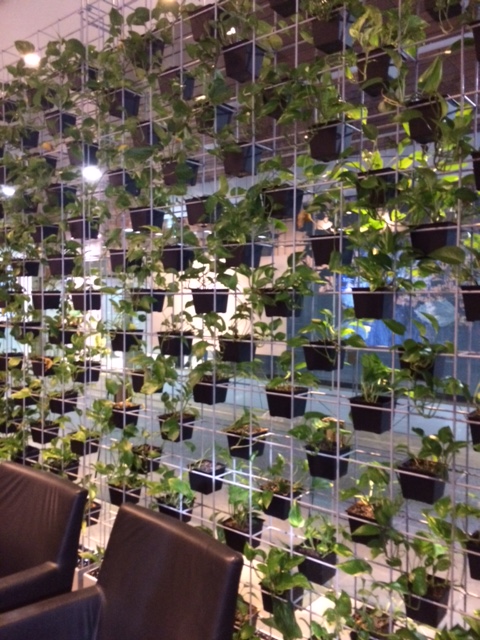Hello everyone! My name is Lindsay Steffen. I’m an MSU senior majoring in Environmental Geography, with a special interest in studying geographic information systems. I currently work as a student assistant for at the Michigan Department of Transportation. I put my major to good use here by analyzing paper maps and working in ArcGIS to determine the potential environmental impacts of road construction projects across the state. When I’m not at school or at work, I’m likely spending time outdoors, reading, or watching sports (particularly Detroit Tigers baseball).
I’m interested in visiting Australia for a number of reasons, including the chance to view the unique wildlife/scenic beauty and to learn about the special environmental challenges that the nation is facing now and will face in the years to come. This is also my first time being in a foreign country for an extended period of time, so I’m looking forward to simply engaging with people from another culture.
As a geography major, I am naturally fascinated with the concept of ‘place’ – for my project, then, I would like to focus on this concept by comparing/contrasting the environmental challenges and sustainable practices of different locations around Australia. How do the environmental concerns of Melbourne compare with those of Sydney, or Cairns? What is each city doing or attempting to do to combat these issues? Potential questions for site visits include:
- What are the biggest challenges you are currently facing?
- How do you expect those challenges will change in the future?
- What makes your practices unique? How do they compare to others at similar sites around the country?
References
- Department of the Environment and Energy. (2013, October 26). Department of the Environment, Australian Government. Retrieved April 19, 2017, from http://www.environment.gov.au/
- Environment Victoria. Safe Climate, Healthy Rivers, Sustainable Living. (n.d.). Retrieved April 19, 2017, from https://environmentvictoria.org.au
- Environmental Threats. (n.d.). Retrieved April 19, 2017, from http://www.workincairns.com/great-barrier-reef/environmental-threats.asp
Post Return – Final Project Update
My final project topic was similar to the one I proposed before departure, but with an added focus on urban sustainability. Specifically, my questions asked were: given the recent increase in the world’s urban populations, how has Australia designed (or how are they currently designing) their cities to increase the concept of sustainability? How do these designs and implementations compare to those in the U.S.?
The concept of urban sustainability, or the designing, planning, and operation of cities with sustainable principles in mind (Sharifi, 2016), is an increasingly critical issue. As of 2014, 54% of the world’s population was living in urban areas, with another 2.5 billion people expected to move to cities by 2050 (World’s population increasingly urban with more than half living in urban areas, 2014). With this many people living in densely concentrated areas, there is constant demand for every type of resource, including food, water, employment, and housing. Urban sustainable development is necessary to protect ecosystems and environmental resources, create and sustain economic growth, and offer a better livelihood overall for all citizens.
My initial background research on urban sustainability yielded many results for Australia, and significantly less for the United States. Australia has two national policies, “Sustainable Australia – Sustainable Communities” and “Our Cities, Our Future,” as well as many policies in cities like Melbourne and Adelaide that deal with sustainable practices such as climate change adaptation, water conservation, and designing “greener” buildings (A city that cares for its environment, n.d.; Sustainable Adelaide, n.d.). In the U.S., however, there is no national policy that explicitly discusses the concept of urban sustainability, and most cities do not have sustainable development goals or initiatives as comprehensive as those in Australia cities (if they have them at all).
While in-country, my primary research was collected through note-taking at site visits and general observation while in the three major cities we visited: Melbourne, Adelaide, and Sydney. I paid special attention to aspects of city life such as transportation (both private and public), architecture, and green spaces like parks, as well as unique or innovative sustainable developments and any factor that was designed to increase the city’s overall livability. Some of the sustainable and/or livable urban designs and practices I found include:
- Free public transportation services, which accommodate daily travelers and tourists while reducing emissions from individual vehicles at the same time
- Encouragement to use cleaner transportation like bicycles through the design of cycling lanes, bike shares, and frequent ‘hoops’ around the city for convenient bike parking
- Solar panels on building roofs to produce renewable energy (this is a common practice throughout all of Australia, not just in the cities)
- “Mixed-use” buildings (buildings that are typically a combination of residential and commercial use) constructed to decrease resource waste and reduce the environmental impact from commuters
- The design of buildings such as Melbourne’s Council House 2, Australia’s first “six-star green building” (the highest on Australia’s green star sustainability ranking), that includes ‘green’ features such as windows placed to increase natural light, heating and cooling systems located to supply air where heat is lost, and plants strategically placed throughout the building (there is at least one plant for every person working there) (Council House 2, n.d.)
- Carbon neutrality action plans like “Carbon Neutral Adelaide,” Adelaide’s goal to become the world’s first entirely carbon neutral (meaning that net carbon emissions equal zero) city by 2050 (Carbon Neutral Adelaide, n.d.)
- Visually-appealing spaces, like public art projects in the forms of statues and murals
- Green spaces like plants, flowers, and trees planted throughout the city
- Community-friendly sustainable projects, such as bicycle workshops, electric car shares, and urban “farms” growing herbs and vegetables that are available for free to the public

Impressive mural painted on the side of our hostel in Adelaide

This urban farm is an example of a “wicking bed,” or a self-watering raised garden (for more information, see link below)

Wall of plants inside the Adelaide City Council building, reducing carbon emissions (and looking pretty!)
After compilation of both background and primary research, it is easy to conclude that Australia has designed their cities, and will continue to design them, with practices of sustainability in mind. Their detailed urban designs and plans take into account the entire environmental, economic, and social concept of sustainability, and as a result, cities here feel green, livable, and laid-back. The United States, on the other hand, has a lot of progress to make regarding this issue. No official national position or policy on urban sustainability as its own concept leaves cities virtually on their own to come up with one. In certain cases, these policies closely resemble the models followed by Australian cities, but there is much variation across the country. Even in U.S. cities where policies for urban sustainability exist, they are typically not as comprehensive as policies in cities like Melbourne and Adelaide. The present design of many U.S. cities fails to account for things like free or renewable energy-powered transportation, green spaces, or community initiatives like urban farms, making them appear and feel much more unsustainable and unlivable than their Australian counterparts.
As a course of action for the United States, I would naturally recommend a stronger national emphasis on urban sustainability and sustainability in general. This needs to come in the form of more detailed and extensive federal goals, outlines, and policies aimed at tackling the issue of urban sustainability in an environmental, economic, and social context. It is important for city governments to work on their own goals and initiatives as well, but they cannot do it alone, and the federal government needs to start increasing its efforts. The U.S. could – and should – look to Australian cities as models of urban sustainability and livability both now and in the years to come.
References
Sharifi, A. (n.d.). From Garden City to Eco-urbanism: The quest for sustainable neighborhood development. Retrieved August 03, 2017, from http://www.sciencedirect.com/science/article/pii/S2210670715300287?via%3Dihub
World’s population increasingly urban with more than half living in urban areas | UN DESA Department of Economic and Social Affairs. (n.d.). Retrieved August 03, 2017, from http://www.un.org/en/development/desa/news/population/world-urbanization-prospects-2014.html
A city that cares for its environment. (n.d.). Retrieved August 04, 2017, from http://www.melbourne.vic.gov.au/about-council/vision-goals/eco-city/Pages/eco-city.aspx
Sustainable Adelaide. (n.d.). Retrieved August 04, 2017, from http://www.cityofadelaide.com.au/city-living/sustainable-adelaide/
Council House 2. (n.d.). Retrieved August 04, 2017, from http://www.melbourne.vic.gov.au/building-and-development/sustainable-building/council-house-2/Pages/council-house-2.aspx
Carbon Neutral Adelaide. (n.d.). Retrieved August 04, 2017, from http://www.cityofadelaide.com.au/city-living/sustainable-adelaide/carbon-neutral-adelaide/
Additional Links
Sustainable Australia – Sustainable Communities
World first: solar to power Melbourne tram network
